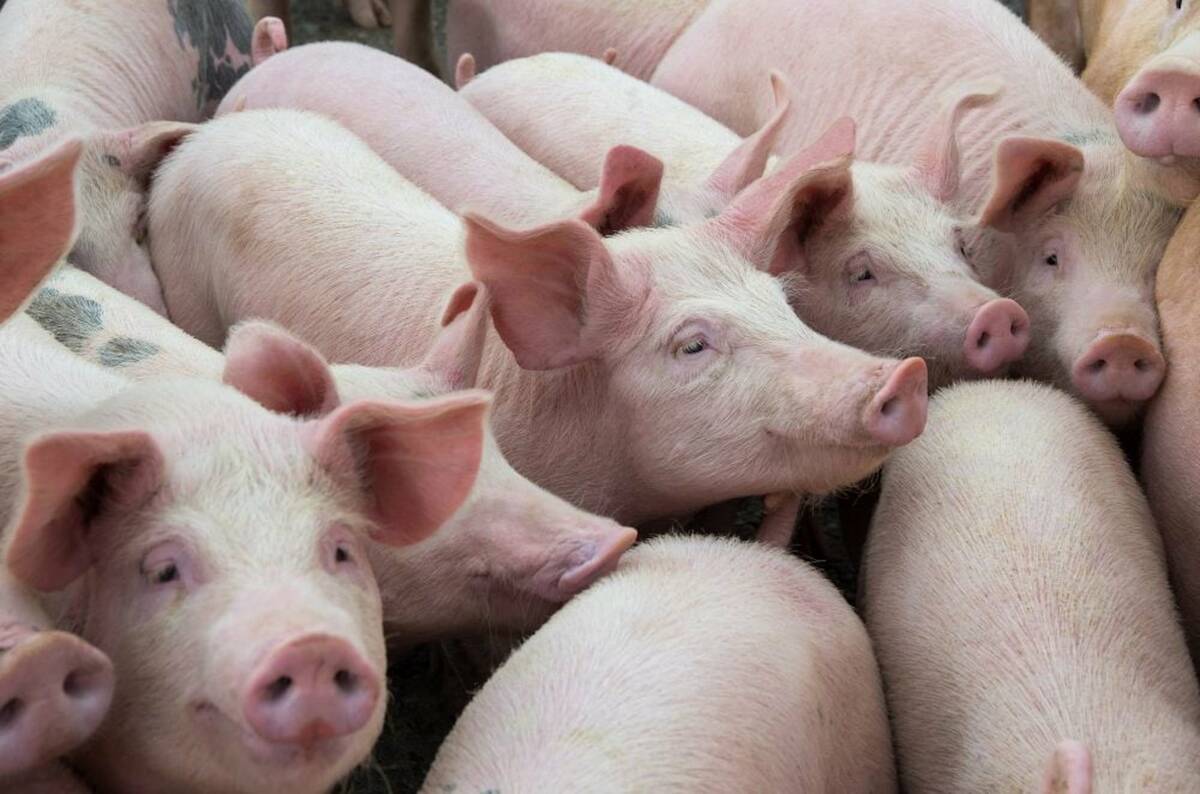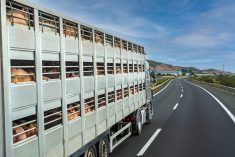A group of dairy cows in New York, able to make their own spa dates with a self-grooming device, has been found to yield more milk and develop fewer cases of mastitis.
Researchers at Cornell University’s Quality Milk Production Services department at Ithaca, N.Y. and the Sprucehaven Farm and Research Center at Union Springs, north of Ithaca, gathered that conclusion from a study using the Swinging Cow Brush, a wall- or post-mounted tool marketed by Swedish dairy equipment firm DeLaval.
Ynte Schukken, a professor of herd health at Cornell, said the automatic brush “provided a favourite pastime for the cows in this herd.”
Read Also

U.S. livestock: Hogs rise ahead of ‘Hogs and Pigs’ report
Chicago cattle futures continued to inch upward on Monday. Hogs also rose in anticipation of Tuesday’s Hogs and Pigs report….
The study of about 400 cows involved two pens of dairy cattle with access to the brushes, and two pens without. Installation of the brushes resulted in an “immediate increase in cow grooming behaviour,” DeLaval said in a release Thursday.
Daily milk production for second-lactation animals in the study showed a “significant and increasing difference in daily milk production with the time passing since installation,” the researchers said.
At about six months after installation, the difference in daily milk production stabilized at about one kilogram higher daily milk production (3.5 per cent) in the cows experiencing the brushes. For some unknown reason, the researchers noted, this difference in daily milk production wasn’t seen in the first- or third-lactation groups.
Also, the researchers noted, “clinical mastitis was lower in pens of cows in second and higher lactation with a Cow Brush present.”
On the correlation between the brushes and milk yield, the study team wrote, “it may be hypothesized that cows that are more active and walk to use the Cow Brush are also inclined to visit the feed bunk while active.”
More active cows, they noted, “would also utilize ketones more (efficiently) and may experience less reduction in feed intake due to high ketones concentration in serum. This would lead to a potential increase in daily milk yield.”
On the correlation between mastitis and milk yield, they added, “the initial hypothesis was that cows that are more active and walk more, are lying a shorter period of time in the stalls and thereby exposing themselves less to bacteria on the stall surface.”
The self-grooming behaviours of the cows in the pens with the brushes also “may lead to an overall cleaner skin in the animals,” they noted.
While the brush wouldn’t reach the cows’ mammaries, it would groom their tails and hindquarters and “may result in a lower exposure of the mammary gland due to general reduction of dirt on the cow.”
Meant to be mounted with the brush’s underside about a metre off the ground, the device includes a single, solid brush unit with 18-cm-long bristles, rotating at 22 rpm.
DeLaval said the Cow Brush, which features an automatic on/off function that starts the brush rotating “on demand” and stops it 10 seconds after use, is suitable for groups of 50 to 60 cows.
It’s also “suitable for cattle over one year old and should not be used by animals with long hair,” the company said on its website.














